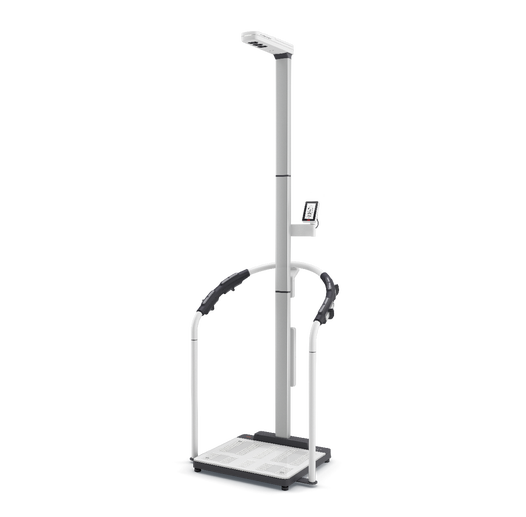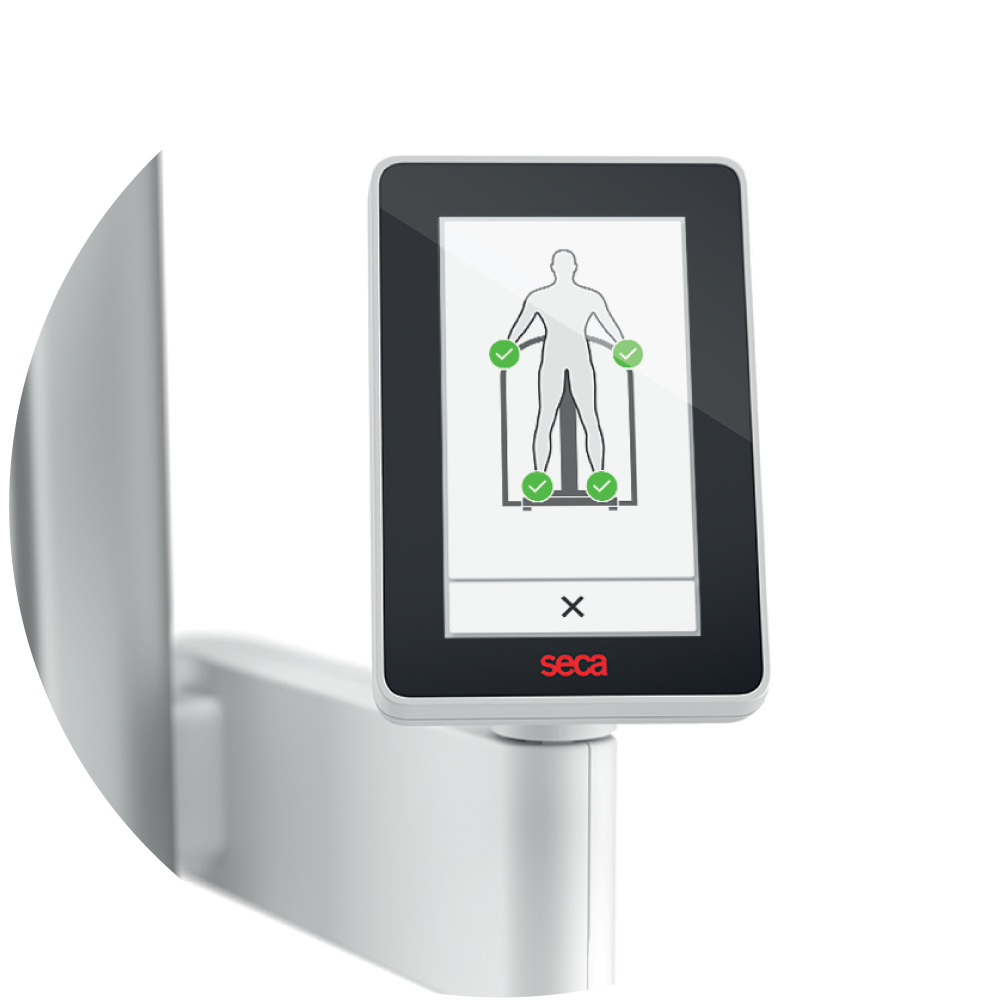WeightWatchers Points Program | WW USA
More insight.
More control.
Introducing WeightWatchers® Body Scan–a personalized coaching service powered by seca full body scan technology.


Weight health is more than a number.
Understanding the impact your behaviors have on your body over time is one of the most powerful ways to take control of your weight health. WeightWatchers Body Scan Experts can help you develop a personalized, data informed, action plan to reach the right goals for your journey.

Private sessions to understand your body composition and create personal action plans.

seca total body scan technology aligned to custom WeightWatchers data points.
Trends + insights tracked over time to provide deeper insights.

Private sessions to understand your body composition and create personal action plans.

seca total body scan technology aligned to custom WeightWatchers data points.
Trends + insights tracked over time to provide deeper insights.
Schedule your appointment today
What to expect during your 1-1 Coaching Session and body scan
Upon arrival, you'll be greeted by our Expert who will walk you through the scan process, the WW metrics, and your action plan.
The process includes a digital body scan and physical waist measurement.
Six key body composition metrics are measured during a WW Body Scan, all actionable within the WeightWatchers program.
After your scan you will work 1-1 with your Expert to understand your metrics and create a personalized action plan.
The process includes a digital body scan and physical waist measurement.
Six key body composition metrics are measured during a WW Body Scan, all actionable within the WeightWatchers program.
After your scan you will work 1-1 with your Expert to understand your metrics and create a personalized action plan.
Your first WW Body Scan appointment will establish a baseline to inform your personalized action plan. Over time, with regular scans, you and our Experts will be able to identify patterns or trends to action on within your journey.
Frequently asked questions
We know your health is more than just a number on the scale. With WW Body Scan, you gain insight into your health beyond your weight. You’ll receive a full body scan (powered by seca technology) and a personalized 1:1 coaching session with a WW expert.
The WW Body Scan provides insights into your body fat, muscle mass, skeletal mass, and a few other parameters by using bioimpedance analysis (BIA) - a safe, non-invasive, easy-to-use, and precise approach to understanding body composition.
Participants will step on the seca scanner, have their body metrics collected, and then have a coaching conversation with one-on-one guidance from a WW expert. Your expert will go over the body scan results and provide you with a personalized action plan.
The WeightWatchers Body Scan experience consists of a full body scan, powered by seca technology, followed by a 1:1 coaching and action planning session with a WeightWatchers expert.
When you arrive at the Studio, you will be greeted by your WW expert, who will check in with you on your journey and goals before your scan. Then, you will remove your socks and shoes and step on the seca machine for your body scan, which takes less than a minute (it’s just like stepping on the scale!). Afterwards, your WW expert will provide you with a read-out of your body scan results and walk you through the metrics. From there, you’ll work together to set an action plan based on your weight health goals. The appointment is 20 minutes in total.
The entire appointment from start to finish is 20 minutes. The scan itself takes a few minutes total.
We know your health is more than just a number on the scale. With WW Body Scan, you gain insight into your health beyond your weight. The WW Body Scan provides participants with six key body composition metrics, and all six are actionable within the WeightWatchers program. Which is why you also receive a 1:1 personalized coaching session with a WW expert, to help you take action to achieve your weight health goals.
The base price for a WW Body Scan is $50.
To ensure maximum accuracy, please follow the following guidelines prior to coming to your WeightWatchers Body Scan appointment:
- Don’t eat two hours prior to measurement
- Don’t drink alcohol 12 hours before measurement
- Don’t drink 8 oz of liquid 30 minutes prior to measurement
- Don’t engage in any intensive physical activity or resistance training the 12 hours prior to measurement
If you are currently pregnant, have a pacemaker, or any portable electronic devices that cannot be turned off, you may not receive a WW Body Scan. Body scans also require the ability to stand upright independently for 30 seconds.
Ethnicity can affect body composition in a number of ways, including fat distribution, muscle mass distribution, and body proportions. seca has done studies with multi-ethnic samples and made adjustments to formulas and reference ranges based on this data. To get the best estimate of your individual body composition, it is important that we compare you with your reference group based on age, gender, ethnicity, and BMI.
WW Body Scans are currently being piloted in five Studios in the US.
Locations include:
- WW Studio Columbus: 3644 W Dublin Granville Rd 13b COLUMBUS, OH 43235
- WW Studio Woodbury: 8390 Tamarack Village Ste 501 WOODBURY, MN 55125
- WW Studio Long Beach: 2832 Bellflower Blvd LONG BEACH, CA 90815
- WW Studio Kennesaw: 840 Ernest W Barrett Pkwy NW Ste 114 KENNESAW, GA 30144
- WW Studio Round Rock: 220 Sundance Pkwy Ste 100 ROUND ROCK, TX 78681
The WW Body Scan consists of 6 metrics: Body Weight, Body Mass Index (BMI), Skeletal Muscle Mass, Fat Mass, Waist circumference, and Visceral Adipose Tissue. These metrics were chosen because they are all actionable within the WeightWatchers program. During your appointment, your WW expert will explain what each metric and measurement might mean for your weight health.
See below for additional information on each metric.
Body weight: Body weight is a measure of the total weight of your muscle, bone, fat, water, and everything else in your body.
What is a healthy body weight for me?
- There’s no easy answer for that. Remember, weight is just one indicator of health and it needs to be considered alongside other factors, such as your physical fitness, mental health, blood pressure, glucose control, and cholesterol levels. If you’re unsure what a healthy body weight is for you, we recommend getting guidance from your healthcare provider. Once you’re aligned on what a healthy weight range looks like for you, WeightWatchers can help you get there.
- There’s no easy answer for that. Remember, weight is just one indicator of health and it needs to be considered alongside other factors, such as your physical fitness, mental health, blood pressure, glucose control, and cholesterol levels. If you’re unsure what a healthy body weight is for you, we recommend getting guidance from your healthcare provider. Once you’re aligned on what a healthy weight range looks like for you, WeightWatchers can help you get there.
Body Mass Index (BMI): Body Mass Index (BMI) is a simple measure of weight-related health risk, or measure of body fat, for adults aged 20 and older. It calculates a number, based on your height and weight.
What is a healthy BMI for me?
- WeightWatchers doesn’t recommend specific BMI (Body Mass Index) numbers. We believe people can be healthy and happy at a range of body sizes, and we know that BMI numbers have limitations. While it’s a widely used metric for determining weight-related health risk, BMI isn’t as equally accurate for everyone and every body—particularly individuals who identify as non-white, female, older, or as an athlete. 1
- It’s one (imperfect) indicator of health that should be part of a broader dialogue about your well-being, including physical fitness, mental health, blood pressure, glucose control, and cholesterol levels. That said, it can be a helpful signal to you (and your doctor) to take a closer look at your health. Here's how the CDC interprets your BMI1:
* <18.5 kg/m2: Underweight
- This range is lower than what is generally considered healthy for a given height, and may indicate underlying medical conditions or an eating disorder, and may present a higher risk for conditions such as osteoporosis.
- * 18.5 - 24.9 kg/m2: Healthy weight
- * 25.0 - 29.9 kg/m2: Overweight
* 30.0 or higher kg/m2: Obesity
- Both overweight and obesity ranges mean a person has a weight that is higher than what is generally considered healthy for a given height. They can indicate higher risk for conditions such as heart disease, high blood pressure, type 2 diabetes, breathing problems, and certain cancers—as well as experiences with weight stigma and discrimination 2,3
- Both overweight and obesity ranges mean a person has a weight that is higher than what is generally considered healthy for a given height. They can indicate higher risk for conditions such as heart disease, high blood pressure, type 2 diabetes, breathing problems, and certain cancers—as well as experiences with weight stigma and discrimination 2,3
- It’s important to note, however, that race, ethnicity, sex, and age may modify the risk associated with a given BMI. Meaning, it’s not as equally accurate for everyone and every body.4 Still, BMI can signal to you (and your doctor) to take a closer look at your health.
- Department of Health and Human Services, Centers for Disease Control and Prevention. Body Mass Index: Considerations for Practitioners. https://www.cdc.gov/obesity/downloads/bmiforpactitioners.pdf Accessed July 28, 2022
- Kyle TK, Dhurandhar EJ, Allison DB. Regarding Obesity as a Disease: Evolving Policies and Their Implications. Endocrinol Metab Clin North Am. 2016;45(3):511-520. doi:10.1016/j.ecl.2016.04.00
- CDC. Effects of Overweight and Obesity. Centers for Disease Control and Prevention. Published July 7, 2022. Accessed July 29, 2022.
- Department of Health and Human Services, Centers for Disease Control and Prevention. Body Mass Index: Considerations for Practitioners. https://www.cdc.gov/obesity/downloads/bmiforpactitioners.pdf Accessed July 28, 2022
Skeletal Muscle Mass (SMM): Skeletal muscle mass (SMM) refers to the muscles connected to your bones and plays a critical role in voluntary, active body movement and posture.
What is a healthy skeletal muscle mass for me?
- Everyone’s skeletal muscle mass is different, and there are no rules for what’s considered a healthy skeletal muscle mass.
- That said, muscle plays an important role in active, and voluntary, body movement and posture. You may want to decrease or increase your skeletal muscle mass depending on your weight health goals.
Body Fat Percentage (Fat Mass Percentage): Body fat is the percentage of your weight that’s made up of fat tissue. For example, if you’re 200 pounds and have 80 pounds of fat tissue, your percentage of body fat is 40%. The rest of your body mass is considered lean mass—made up of bone, water, muscle, organ, and other tissues.
What’s a healthy body fat range for me?
- Healthy body fat ranges differ based on one's sex assigned at birth. It’s generally encouraged for males to have less than 20.1% body fat and for females to have less than 30.1% body fat, as greater body fat percentages are associated with an increased risk for diabetes and high blood pressure.1
Overweight is defined as 20.1-24.9% body fat in males and 30.1-34.9% body fat in females, whereas obesity is defined as 25.0% or more body fat in males and 35% or more body fat in females. However, it is important to note that these are general guidelines and evidence suggests that what is considered a healthy body fat range can also significantly differ by race and ethnicity.2
- Gómez-Ambrosi J, Silva C, Galofré JC, et al. Body mass index classification misses subjects with increased cardiometabolic risk factors related to elevated adiposity. Int J Obes. 2012;36(2):286-294. doi:10.1038/ijo.2011.100
- Gallagher D, Heymsfield SB, Heo M, Jebb SA, Murgatroyd PR, Sakamoto Y. Healthy percentage body fat ranges: an approach for developing guidelines based on body mass index. Am J Clin Nutr. 2000;72(3):694-701. doi:10.1093/ajcn/72.3.694
Waist Circumference: Waist Circumference (WC) is measured by finding the midpoint between the lowest rib and the top of your hip bone with a measuring tape.
What is a healthy waist circumference for me?
- The National Heart, Lung, and Blood Institute (NHLBI) uses waist circumference guidelines for women (35 inches) and men (40 inches). Anything above this is considered to indicate obesity, which is associated with an increased risk of health issues. Talk to your healthcare provider about your numbers for more individualized guidance.
Visceral Adipose Tissue: Visceral Adipose Tissue (VAT) refers to fat stored deep within the abdominal cavity surrounding internal organs such as the liver, pancreas, and intestines. This type of fat is associated with the greatest health risk.
What is a healthy visceral adipose tissue for me?
- The science is still evolving on recommended volumes of VAT, however, we do know that as VAT increases, so does your risk for obesity-related comorbidities.
